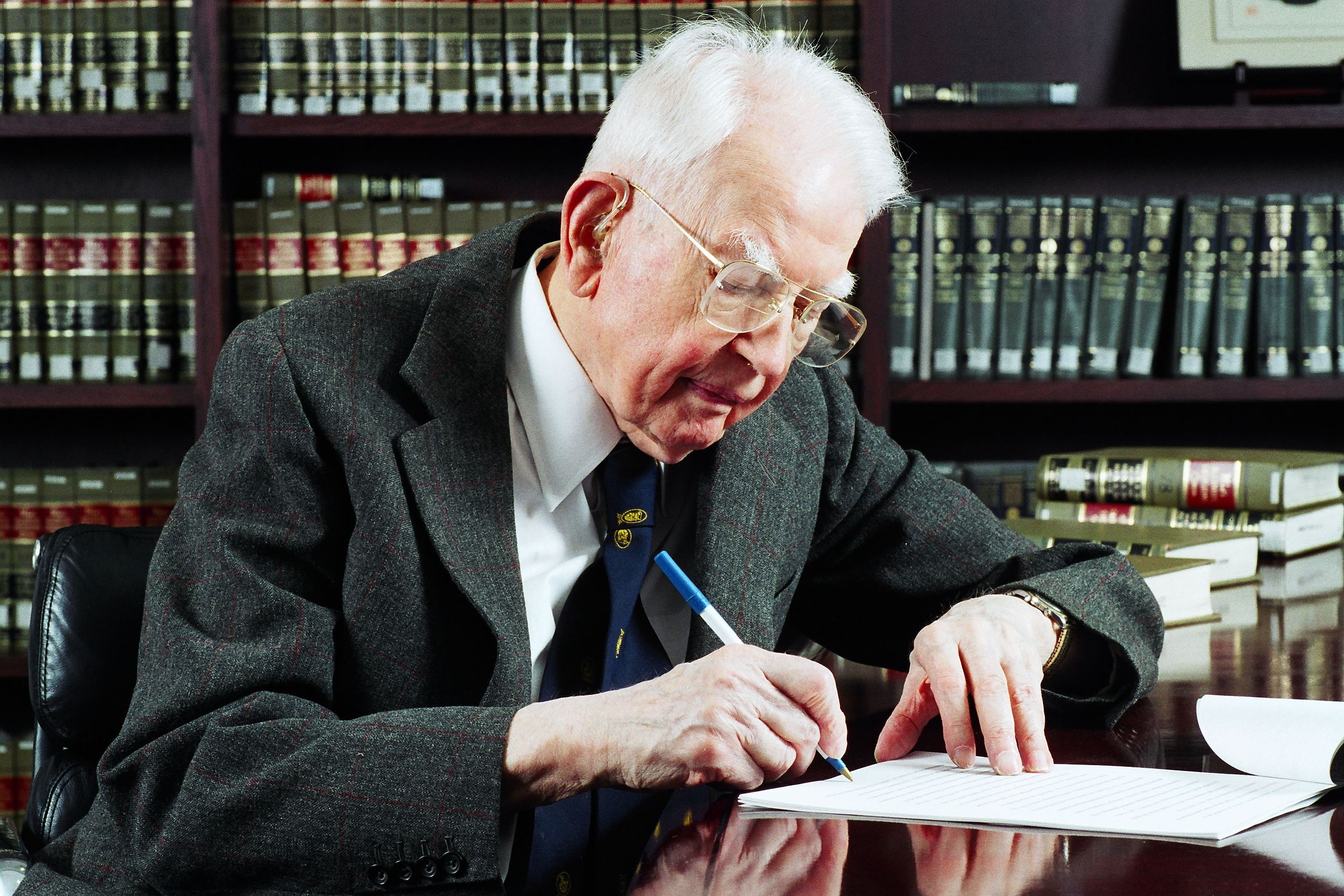8.2 Correcting Externalities
In the previous section we saw that the problem of externalities arises because the parties who are harmed or benefited do not participate in bargaining. The examples of Alice, who chooses plastic and generates environmental damage greater than her private gain, and of Bruno, who refrains from installing a beehive even though it would benefit neighboring farmers, illustrate this mechanism well: without involving all the affected parties, the market leads to inefficient outcomes.
Coase Theorem
But what if all parties could easily take part in negotiations? The Coase theorem states
 Ronald Coase
Ronald Coase
(Nobel Prize in Economics 1991)
that, if property rights are well defined and transaction costs are zero, the parties will bargain with each other until they reach the efficient allocation. The intuition is that the right — for example to buy plastic or to install a beehive — ends up being held by whoever is willing to pay the most for it. If the initial holder of the right assigns it a low value, they will be incentivized to give it up in exchange for compensation; if instead they consider it valuable, they will be willing to pay to keep it. In this way, through bargaining, the final outcome coincides with the socially efficient one.
Let us apply the principle to our examples. If the right belongs to Alice (she can buy plastic), the citizens might offer her compensation to choose glass: they would do so whenever the environmental damage exceeds Alice’s private benefit. If the right belongs to the citizens (plastic cannot be purchased without their authorization), then it is Alice who can offer to pay in order to obtain it — but she will do so only if her benefit exceeds the damage. In both scenarios, bargaining leads to the same efficient quantity. The same logic applies to Bruno and the beehive: if the right to decide belongs to him, the farmers can compensate him to induce the investment; if the right belongs to the neighbors, it will be Bruno who proposes an agreement only if the beehive generates a social benefit greater than the cost. Once again, the efficient outcome is reached, although the distribution of the surplus changes depending on who initially holds the rights.
The Coase theorem relies on strong assumptions: well-defined property rights and zero transaction costs. In practice, these conditions are rarely met: for example, only when the parties involved are few and easily identifiable, when information on damages and benefits is clear, and when legal or coordination costs among the parties are negligible. In most real-world cases, such circumstances do not occur, and therefore the Coasian solution remains primarily a theoretical benchmark: it shows that, in principle, externalities can be resolved by the market itself. But in practice, precisely because these conditions are seldom satisfied, public intervention is necessary.
Government Intervention
When the market produces too much of a good that generates an external cost, its quantity must be reduced. When it produces too little of a good that generates an external benefit, it must be encouraged. The role of the State is to ensure that those who generate an external cost or benefit internalize the externality, that is, take it into account in their own decisions.
How can the State do this? In the case of negative externalities, such as in the market for plastic bottles illustrated in Figure 8.1, the typical instrument In The Economics of Welfare Pigou introduced the idea of correcting externalities through taxes or subsidies. Modern instruments such as the carbon tax or the plastic tax descend directly from that insight. is the Pigouvian tax (named after Pigou, the same economist of price discrimination): an excise tax with a rate equal to the marginal external cost ($MEC$) calculated at the socially efficient quantity Several countries have introduced specific taxes on polluting goods. Italy, for example, approved a plastic tax of $0.45$ euros per kg of single-use plastic with the 2020 Budget Law. . If the $MEC$ is constant, as in the example where each bundle of plastic generates a damage of $2$ euros, it is enough to set a tax of $2$ euros per bundle: the market equilibrium quantity changes from $Q=5$ to $Q=4$, which coincides with the social optimum. If the $MEC$ increases with quantity — for example $MEC(Q)=Q/2$ — the logic does not change: the Pigouvian tax is always equal to the value of the $MEC$ evaluated at the efficient quantity. In our example, the optimal quantity is $Q=4$ and therefore the Pigouvian tax is $T=MEC(4)=2$.
Symmetrically, in the case of positive externalities Policies of this type are very common: the Common Agricultural Policy (CAP), for example, provides specific support programs for beekeeping. the natural instrument is the subsidy. In the honey market of Figure 8.2, the quantity traded without intervention ($Q=5$) is below the optimal level ($Q=6.5$). A unitary transfer equal to the marginal external benefit ($MEB$) — in this case 3 euros per kilogram — encourages the beekeeper to produce more, shifting equilibrium to the socially efficient quantity.
Taxes and subsidies, however, are not the only possible instruments. An alternative approach is direct regulation, whereby the State imposes limits or binding standards: it can set a maximum production cap, ban certain goods (such as single-use plastic bags), or impose less polluting technologies. Another instrument is represented by tradable permits (cap-and-trade). In this case, the State establishes the total allowable quantity, issues a corresponding number of permits, and allows economic agents to trade them. In our example, limiting production to 4 million bundles of plastic means that the market, by buying and selling permits, will find a price that induces firms to produce exactly $Q=4$.